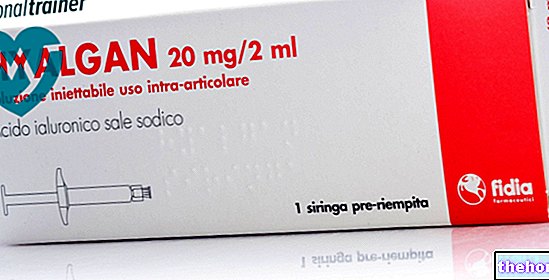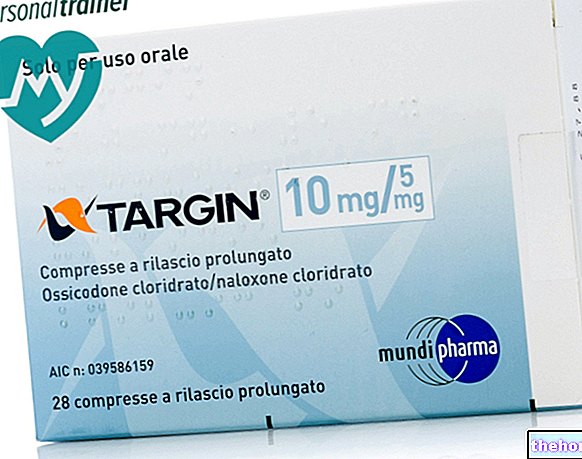Active ingredients: Estazolam
ESILGAN 1 mg tablets
ESILGAN 2 mg tablets
Why is Esilgan used? What is it for?
Esilgan contains estazolam, an active substance belonging to the class of medicines called 'benzodiazepines'.
Esilgan is indicated in adults for the short-term treatment of insomnia (when you are unable to sleep), in cases where this disorder is severe and causes severe discomfort in normal daily life.
Talk to your doctor if you don't feel better or if you feel worse.
Contraindications When Esilgan should not be used
Do not take ESILGAN
- if you are allergic to estazolam or any of the other ingredients of this medicine (listed in section 6).
- If you suffer from a severe disease affecting the muscles which manifests itself as weakness and tiredness (myasthenia gravis).
- If you suffer from severe decreased activity of the respiratory system (severe respiratory failure).
- If you suffer from temporary cessation of breathing during sleep (sleep apnea syndrome).
- If you have severe liver disease (severe liver failure).
- If you are in the first 3 months of pregnancy (see section 2. Pregnancy and breast-feeding).
Esilgan is also contraindicated in children.
Precautions for use What you need to know before taking Esilgan
Talk to your doctor or pharmacist before taking ESILGAN.
In particular, tell your doctor if:
- is debilitated;
- is elderly;
- suffer from liver or kidney disease;
- suffer from a reduction in the activity of the respiratory system (respiratory failure);
- suffer from depression or anxiety related to depression, because ESILGAN can worsen your situation and tendency to suicide (try to kill yourself);
- have had drug or alcohol abuse problems in the past;
- suffer from a mental disorder that causes an "altered perception of reality, thought disturbances, mental confusion (psychosis).
Interactions Which drugs or foods can modify the effect of Esilgan
Tell your doctor or pharmacist if you are taking, have recently taken or might take any other medicines.
Tell your doctor if you are taking any of the following medicines together with ESILGAN because caution is needed when combining ESILGAN with medicines that reduce and block the activity of the central nervous system:
- medicines used for some mental illnesses (antipsychotics-neuroleptics)
- calming and sleep-stimulating medicines (hypnotics)
- medicines that cause physical and mental numbness (anxiolytics / sedatives)
- medicines used to treat depression (antidepressants)
- medicines for the treatment of acute or chronic high intensity pain (narcotic analgesics). Narcotic analgesics can cause an increase in euphoria leading to an increase in psychic dependence.
- medicines used to treat epilepsy (antiepileptics).
- medicines used to counteract allergic manifestations (sedative antihistamines)
- anesthetics
- medicines that induce relaxation of the muscles (muscle relaxants)
ESILGAN with alcohol
Do not drink alcohol while taking ESILGAN.
Warnings It is important to know that:
Tolerance development
After repeated use of ESILGAN for a few weeks, there may be a decrease in its effectiveness (tolerance).
Addiction development
The use of high doses and / or for prolonged periods of ESILGAN can lead to physical and mental dependence, as is the case with other similar medicines. The risk increases with dose and duration of treatment and is greater if you have abused in the past. drugs or alcohol, as you are more prone to habit and addiction. Take special care if you become addicted. In this case you should not abruptly stop treatment with this medicine, as withdrawal symptoms may occur (see section 3 "If stop treatment with ESILGAN ").
Anterograde amnesia
You may have memory lapses (anterograde amnesia) even several hours after taking the medicine (see section 4 "Possible side effects"). To reduce this risk, make sure that you have uninterrupted sleep for 7-8 hours after having assumed ESILGAN.
Psychiatric and paradoxical reactions
It can manifest behavioral disturbances (psychiatric and paradoxical reactions) such as restlessness, agitation, irritability, aggression, delirium, anger, nightmares, hallucinations, psychosis and other behavioral disturbances. If you experience these symptoms, please contact your doctor as it is necessary to stop the treatment (see section 4 "Possible side effects"). Such reactions are more frequent in children and the elderly.
After 'discontinuation of treatment' rebound insomnia 'may occur, ie you may experience more intensely the symptoms that led you to take this medicine (see section' If you stop taking ESILGAN ').
The duration of treatment should be as short as possible and should not exceed 4 weeks. Treatment with this medicine will be stopped by gradually reducing the dose to minimize the appearance of withdrawal symptoms (see section 3 "If you stop taking ESILGAN"). However, you can still experience these symptoms, especially between taking one dose and the next and if your dose is high.
Children and adolescents
ESILGAN is contraindicated in pediatric age.
Pregnancy and breastfeeding
Pregnancy
Do not take ESILGAN in the first 3 months of pregnancy.
If you are planning to become pregnant or suspect that you are pregnant, contact your doctor immediately.
After the first 3 months of pregnancy, Esilgan will only be prescribed to you if absolutely necessary and under the direct supervision of your doctor. If, for serious health reasons, your doctor decides to prescribe this medicine during the last period of pregnancy or during labor at high doses, the newborn may experience serious side effects (low body temperature (hypothermia), weakness of the muscles (hypotonia) and difficulty in breathing ("Floppy Infant Syndrome" or hypotonia of the infant).
Also, if ESILGAN has been taken regularly during the later stages of pregnancy, your baby may experience physical dependence or withdrawal symptoms.
Feeding time
As ESILGAN passes into breast milk, do not take it while breastfeeding.
Driving and using machines
ESILGAN affects the ability to drive and use machines.
Do not drive or use machines if you experience undesirable effects during treatment with ESILGAN such as sedation (physical and mental relaxation with lightheadedness), amnesia (memory disturbances), impaired concentration and muscle function, which may be induced by taking ESILGAN. Your alertness may especially be impaired if you have not slept long enough (7-8 hours) after taking ESILGAN.
ESILGAN contains lactose
ESILGAN contains lactose (milk sugar). If you have been told by your doctor that you have "intolerance to some sugars (eg lactose), contact your doctor before taking this medicine.
Dose, Method and Time of Administration How to use Esilgan: Posology
Always take this medicine exactly as your doctor or pharmacist has told you. If in doubt, consult your doctor or pharmacist.
Your doctor will work out the dose and frequency of taking that is most suitable for you, depending on your age, symptoms and general health.
The generally recommended dose is:
- mild insomnia and in elderly patients: 0.5-2 mg corresponding to half a 1 mg tablet, or 1 tablet of 1 mg or 1 tablet of 2 mg) in the evening before bedtime;
- stubborn insomnia or related to nervous or somatic diseases: 2-4 mg corresponding to 1-2 tablets of 2 mg) in the evening before bedtime.
The tablet can be divided into equal parts.
In general, start treatment with the lowest recommended dose and do not exceed the maximum recommended dose.
After taking this medicine, make sure you have 7-8 hours of uninterrupted sleep. Your doctor may reduce your dose if:
- is debilitated;
- is elderly;
- you suffer from an "alteration of the mental state, of the mood or of the behavior caused by a disease (organic changes in the brain);
- suffer from liver or kidney disease;
- his heart is unable to supply blood in an adequate quantity with respect to the actual request of the organism (cardiorespiratory insufficiency);
- suffer from reduced respiratory activity (chronic respiratory failure).
Duration of treatment
Your doctor will prescribe the shortest possible treatment duration.
Generally, the duration of treatment varies from a few days to 2 weeks, up to a maximum of 4 weeks, including a gradual withdrawal period.
When starting treatment with ESILGAN, your doctor will explain how to gradually decrease the dose of this medicine in order to reduce the risk of you experiencing withdrawal and rebound symptoms (see sections "If you stop taking ESILGAN" and "Possible side effects" ").
In certain cases, the doctor, after re-evaluating your state of health, may decide to extend the duration of treatment indicated above.
If you forget to take ESILGAN
Do not take a double dose to make up for a forgotten dose.
If you stop taking ESILGAN
Do not stop taking ESILGAN without first checking with your doctor.
- Your doctor will gradually reduce your dose during the withdrawal phase of therapy.
- Abrupt discontinuation of this medicine may result in:
- withdrawal symptoms such as headache, body aches, extreme anxiety, tension, restlessness, confusion and irritability. In severe cases there may be a sensation of feeling out of reality (derealization), feeling detached from one's body (depersonalization), increased sensitivity to sounds (hyperacusis), numbness and tingling in the extremities, hypersensitivity to light, noise and physical contact, hallucinations or uncontrolled body movements accompanied by loss of consciousness (seizures). You may experience these symptoms even in the interval between 2 doses, especially if the dosage is high.
- rebound symptoms (when symptoms that led to treatment with ESILGAN recur in a more severe form after stopping treatment) such as mood changes, anxiety, restlessness or sleep disturbances;
- These symptoms occur especially if you have developed physical dependence on this medicine (see section "Warnings and precautions").
If you have any further questions on the use of this medicine, ask your doctor or pharmacist.
Overdose What to do if you have taken too much Esilgan
In case of accidental ingestion / intake of an excessive dose of ESILGAN, notify your doctor immediately or go to the nearest hospital.
Symptoms
There is no danger to life if you accidentally take more medicine than prescribed, unless you also take alcohol or other medicines at the same time.
In mild cases the symptoms in case of accidental ingestion / intake of an overdose of ESILGAN may be:
- clouding of the senses (clouding);
- mental confusion;
- continuous sleep and reduced response to normal stimuli (lethargy).
In severe cases, the symptoms can be:
- reduced motor and gait coordination (ataxia);
- decreased muscle tone (hypotonia);
- low blood pressure (hypotension);
- reduced breathing (respiratory depression);
- coma;
- death.
Treatment
The doctor, after evaluation of the symptoms, will carry out suitable supportive therapy (for example with induction of vomiting, activated charcoal and / or gastric lavage). He could also give you flumazenil as an antidote.
Side Effects What are the side effects of Esilgan
Like all medicines, this medicine can cause side effects, although not everybody gets them.
Contact your doctor immediately, who will stop treatment immediately, if you experience any of the following side effects while using ESILGAN:
- restlessness
- agitation
- irritability
- aggression
- disappointment
- anger
- nightmares
- perception of things that do not exist in reality (hallucinations)
- mental disorder that causes an "altered perception of reality, thought disturbances, mental confusion (psychosis)
- behavioral changes
These reactions are so-called "paradoxical" and are more frequent in the elderly and children.
In addition, you may experience the following side effects for which the frequency is not known.
These side effects mainly occur at the start of therapy and usually disappear with subsequent administrations:
Frequency not known (frequency cannot be estimated from the available data):
- sleepiness during the day
- reduction of vigilance
- headache
- dizziness
- reduced motor and gait coordination (ataxia)
- muscle weakness
- double vision
- fatigue
- lack of emotional sensitivity (dulling of emotions)
- confusion
Additional side effects of unknown frequency may be:
- stomach and intestinal disorders
- altered sexual desire (changes in libido)
- skin reactions
- skin rashes
- itch
- reduced breathing (respiratory depression);
- memory disturbances (anterograde amnesia). This side effect can also occur at the recommended therapeutic doses, the risk increases with higher doses. This effect may be associated with behavioral disturbances. This effect occurs most often several hours after taking the medicine and therefore, to reduce the risk, before taking this medicine you should ensure that you have sufficient uninterrupted sleep of 7-8 hours (see section 3. "How take ESILGAN ").
- dependence:
- physical dependence. If you have developed physical dependence on this medicine, there is an increased risk of you experiencing withdrawal symptoms and / or rebound symptoms during the treatment discontinuation phase (see section "If you stop taking ESILGAN");
- psychic dependence.
The risk of developing dependence increases with increasing dose and duration of treatment, and if you have abused drugs or alcohol in the past (see section "Warnings and precautions").
If you suffer from depression, ESILGAN can make your situation worse and suicidal (try to kill yourself).
Reporting of side effects
If you get any side effects, talk to your doctor or pharmacist. This includes any possible side effects not listed in this leaflet. You can also report side effects directly via the national reporting system at www.agenziafarmaco.gov.it/it/responsabili. By reporting side effects you can help provide more information on the safety of this medicine.
Expiry and Retention
This medicinal product does not require any special storage conditions.
Keep this medicine out of the sight and reach of children.
Do not use this medicine after the expiry date which is stated on the carton after EXP.
The expiry date refers to the last day of that month.
Do not throw any medicines via wastewater or household waste. Ask your pharmacist how to throw away medicines you no longer use. This will help protect the environment.
Deadline "> Other information
What ESILGAN contains
Esilgan 1 mg tablets
- The active ingredient is estazolam. Each tablet contains 1 mg of estazolam.
- The other ingredients are lactose (see section 2. ESILGAN contains lactose), maize starch, hydroxypropylcellulose, magnesium stearate
Esilgan 2 mg tablets
- The active ingredient is estazolam. Each tablet contains 2 mg of estazolam.
- The other ingredients are lactose (see section 2. ESILGAN contains lactose), maize starch, hydroxypropylcellulose, magnesium stearate
Description of what ESILGAN looks like and contents of the pack
ESILGAN comes in the form of breakable tablets.
It is available in the following pack sizes: 1 mg 30 divisible tablets 2 mg 30 divisible tablets.
Not all pack sizes may be marketed.
Source Package Leaflet: AIFA (Italian Medicines Agency). Content published in January 2016. The information present may not be up-to-date.
To have access to the most up-to-date version, it is advisable to access the AIFA (Italian Medicines Agency) website. Disclaimer and useful information.
01.0 NAME OF THE MEDICINAL PRODUCT -
ESILGAN TABLETS
02.0 QUALITATIVE AND QUANTITATIVE COMPOSITION -
ESILGAN 1 mg tablets
One tablet contains:
Active ingredient: estazolam 1 mg.
ESILGAN 2 mg tablets
One tablet contains:
Active ingredient: estazolam 2 mg.
Excipient with known effect: lactose.
For the full list of excipients, see section 6.1.
03.0 PHARMACEUTICAL FORM -
Divisible tablets for oral use.
04.0 CLINICAL INFORMATION -
04.1 Therapeutic indications -
Short-term treatment of insomnia.
Benzodiazepines are only indicated when the disorder is severe, disabling, or makes the subject very uncomfortable.
04.2 Posology and method of administration -
The duration of treatment should be as short as possible: it generally ranges from a few days to two weeks, up to a maximum of four weeks, including a gradual withdrawal period.
Sometimes it may be necessary to extend the treatment period beyond the maximum; in this case this must not take place without first re-evaluating the patient's clinical condition.
Treatment should be started with the lowest recommended dose.
The maximum dose should not be exceeded.
The dosage must be related to the age, the general state of the patient and the symptoms. Due to the highly variable reactivity to psychotropic drugs, the use and dosage of Estazolam must be based on prudent criteria in elderly, debilitated patients, in those with organic brain changes. (arteriosclerotic species) or with hepatic or renal dysfunction or cardiorespiratory insufficiency.
The following doses are recommended: common insomnia, with mild symptoms and in the elderly patient: 0.5-2 mg in the evening before bedtime (half a 1 mg tablet, or 1 1 mg tablet or 1 2 mg tablet); obstinate insomnia, insomnia linked to mental illness or due to neurotic facts, insomnia consequent to somatic diseases: 2-4 mg in the evening before going to bed (1-2 tablets of 2 mg).
04.3 Contraindications -
Myasthenia gravis.
Hypersensitivity to the active substance, to benzodiazepines or to any of the excipients listed in section 6.1.
Severe respiratory failure
Sleep Apnea Syndrome
Severe hepatic insufficiency
Pediatric age
First trimester of pregnancy (see section 4.6)
04.4 Special warnings and appropriate precautions for use -
Tolerance
After repeated use for a few weeks, a reduction in the hypno-inducing effect of benzodiazepines may occur.
Dependence
The use of benzodiazepines can lead to physical and mental dependence on these drugs. The risk of dependence increases with the dosage and duration of treatment. It is also greater in patients with a history of alcohol or drug abuse.
In cases where physical dependence has developed, abrupt cessation of treatment will cause withdrawal symptoms which may include headache, muscle aches, extreme anxiety, tension, restlessness, confusion and irritability. In severe cases the following symptoms may occur: derealization, depersonalization, hyperacusis, numbness and tingling in the extremities, hypersensitivity to light, noise and physical contact, hallucinations or seizures.
Rebound insomnia
Upon discontinuation of treatment, a transient syndrome may occur which consists in the reappearance, in an accentuated form, of the symptoms that led to treatment with benzodiazepines. It can be accompanied by other reactions such as: changes in mood, anxiety, restlessness or sleep disturbances. Since the risk of withdrawal or rebound symptoms is more pronounced after abrupt discontinuation of treatment, it is recommended to gradually reduce the doses.
Duration of treatment
The duration of treatment should be as short as possible (see section 4.2), but should not exceed four weeks, including a gradual withdrawal period. Treatment should not be extended beyond the above limits without first re-evaluation of the clinical situation.
It may be useful to inform the patient, at the beginning of the treatment, that this will be of limited duration and to explain exactly how the dosage will have to be progressively reduced. It is also important that the patient is aware of the possibility of rebound phenomena, thus reducing to minimum the anxiety provoked by these symptoms in case they should arise in the withdrawal phase of the drug.
It seems that, in the case of benzodiazepines with a short half-life, the withdrawal phenomena can occur in the interval between two intakes, especially if the dosage is high.
Amnesia
Benzodiazepines can induce anterograde amnesia. Often this effect occurs several hours after taking the drug, so to reduce this risk, patients should be sure they can have an uninterrupted sleep period of 7-8 hours (see "Side Effects").
Psychiatric and paradoxical reactions
With the use of benzodiazepines can occur: restlessness, agitation, irritability, aggression, disappointment, anger, nightmares, hallucinations, psychosis, behavioral changes. If this occurs, the use of the drug should be discontinued.
The occurrence of such reactions is more frequent in children and the elderly.
Specific groups of patients
The drug should be administered with caution in the following cases: debilitated patients, elderly patients, patients with liver or kidney disorders and patients in whom the respiratory function is severely depressed. Benzodiazepines should not be given to children without careful consideration of the actual need for treatment; the duration of treatment should be as short as possible.
Elderly people should take a reduced dose (see section 6.2).
Also a lower dose is suggested for patients with chronic respiratory insufficiency due to the risk of depression of the breath.
Benzodiazepines are not indicated in the treatment of patients with severe hepatic insufficiency, as these drugs can precipitate encephalopathy.
Benzodiazepines are not recommended as the primary treatment for psychotic illness.
Benzodiazepines should not be used alone in the treatment of depression or anxiety associated with depression (the risk of suicide may increase in such patients).
Benzodiazepines should be used with extreme caution in patients with a history of alcohol or drug abuse.
This lactose-containing medicine. Patients with rare hereditary problems of galactose intolerance, the Lapp lactase deficiency, or glucose-galactose malabsorption should not take this medicine.
Keep this medicine out of the reach of children.
04.5 Interactions with other medicinal products and other forms of interaction -
Concomitant intake with alcohol should be avoided.
The sedative effect may be enhanced if the drug is taken in conjunction with alcohol. This adversely affects the ability to drive or use machines.
Combination with CNS depressants: when used in combination with antipsychotics (neuroleptics), hypnotics, anxiolytics / sedatives, antidepressants, narcotic analgesics, antiepileptic drugs, sedative anesthetics and antihistamines and muscle relaxants, an increase in the depressant effect may occur. central level.
In the case of narcotic analgesics, an accentuation of euphoria can also occur, which induces an increase in psychic dependence.
Substances that inhibit some liver enzymes (particularly cytochrome P450) may increase the activity of benzodiazepines.
To a lesser extent this also applies to benzodiazepines which are metabolised only by conjugation.
04.6 Pregnancy and breastfeeding -
Do not administer in the first trimester of pregnancy.
If the drug is prescribed to a woman of childbearing age she should be advised to contact her doctor to discontinue treatment if she intends to become pregnant or suspects she is pregnant.
If for absolute medical necessity Estazolam is administered during the last phase of pregnancy, or during labor at high doses, effects such as hypothermia, hypotonia and moderate respiratory depression, caused by the pharmacological action of the drug, can be expected on the newborn.
Furthermore, babies born to mothers who took benzodiazepines chronically during the latter stages of pregnancy may have developed physical dependence and have some risk of developing withdrawal symptoms in the postnatal period.
As benzodiazepines are excreted in breast milk, Estazolam should not be given to mothers who are breastfeeding.
04.7 Effects on ability to drive and use machines -
Sedation, amnesia, impaired concentration and muscle function can adversely affect the ability to drive or use machines. In case of insufficient sleep duration, the likelihood of decreased alertness may increase (see section 4.5).
04.8 Undesirable effects -
The following may occur: drowsiness during the day, dulling of emotions, decreased alertness, confusion, fatigue, headache, dizziness, muscle weakness, ataxia, double vision.
These phenomena can occur mainly at the beginning of therapy and usually disappear with continued treatment. Occasionally other side effects have been reported such as: gastrointestinal disturbances, libido changes, skin reactions, rash, itching, respiratory depression.
Amnesia
Anterograde amnesia may also occur at therapeutic dosages, but the risk is greater with higher doses.
Amnesic effects may be associated with behavioral changes (see section 4.4).
Depression
Pre-existing states of depression may occur during the use of benzodiazepines.
It is known that during the use of benzodiazepines or benzodiazepine-like compounds the following reactions may occur: paradoxical reactions, restlessness, agitation, irritability, aggression, disappointment, anger, nightmares, hallucinations, psychosis, behavioral alteration. Such reactions can be quite enough. severe They are more likely in children and the elderly.
Dependence
Continued use of benzodiazepines (even at therapeutic doses) can lead to the development of physical dependence: discontinuation of therapy may cause rebound or withdrawal phenomena (see section 4.4), therefore discontinuation of the drug should be implemented by gradually reducing the doses.
Psychic dependence can occur. Abuse of benzodiazepines has been reported.
Reporting of suspected adverse reactions
Reporting of suspected adverse reactions occurring after authorization of the medicinal product is important as it allows continuous monitoring of the benefit / risk balance of the medicinal product. Healthcare professionals are asked to report any suspected adverse reactions via the national reporting system. "address www.agenziafarmaco.gov.it/it/responsabili.
04.9 Overdose -
As with other benzodiazepines, an overdose should not pose a risk to life, unless these have been taken concomitantly with other central nervous system depressants (including alcohol).
In the treatment of overdose of any medicinal product, it should be borne in mind that several substances may have been taken at the same time.
In the event of an overdose of benzodiazepines for oral use, vomiting should be induced (within one hour) if the patient is conscious or gastric lavage undertaken, with respiratory protection if the patient is unconscious. should not bring any benefit, administer activated charcoal to reduce absorption. Special attention should be paid to respiratory and cardiovascular functions in emergency therapy.
Overdosage of benzodiazepines usually results in varying degrees of central nervous system depression ranging from clouding to coma. In mild cases, symptoms include drowsiness, mental confusion, and lethargy. In severe cases, symptoms may include ataxia, hypotonia, hypotension, respiratory depression, rarely coma, and very rarely death.
Flumazenil can be useful as an antidote.
05.0 PHARMACOLOGICAL PROPERTIES -
05.1 "Pharmacodynamic properties -
Pharmacotherapeutic group: hypnotics-sedatives; benzodiazepine derivatives.
ATC code: N05CD04.
Estazolam is a non-barbiturate hypnoinducer, belonging to a family of benzodiazepines: the triazolbenzodiazepines.
Estazolam exerts its hypnogenic activity by reducing the "excitability of the mesodiencephalic and limbic structures involved in the modulation of emotional phenomena. Estazolam, despite having a pharmacological spectrum similar to that of the family to which it belongs, differs from other benzodiazepines for a marked hypnoinductive activity, a" significantly lower anxiolytic activity and a completely negligible muscle relaxant effect.
Estazolam determines the rapid induction of a deep sleep, of a duration superimposable to the physiological one, keeping the normal dream activity unchanged and predisposing the patient to a ready awakening, alert and in a normal mood condition.
05.2 "Pharmacokinetic properties -
Estazolam does not cause accumulation.
In the "experimental animal, Estazolam is absorbed mainly in the duodenum and the cerebral levels are practically superimposable to the blood levels since the drug easily crosses the blood brain barrier.
In humans after oral administration the onset of estazolam in plasma is rapid with an absorption half-life (t½α) of 17.1 minutes. The blood peak is reached within 6 hours. The elimination half-life (t½β) is approximately 17 hours. The elimination kinetics of Estazolam can be classified as intermediate between that of short-acting benzodiazepines and that of long-acting benzodiazepines.
05.3 Preclinical safety data -
The oral LD50 varies between 740 and 3,200 mg / kg depending on the animal species. The drug did not show teratogenic effects and did not affect the fertility of the treated animals.
06.0 PHARMACEUTICAL INFORMATION -
06.1 Excipients -
Lactose, corn starch, hydroxypropylcellulose, magnesium stearate
06.2 Incompatibility "-
Not known.
06.3 Period of validity "-
The tablets in the package properly stored at room temperature, are stable for a period of 4 years.
06.4 Special precautions for storage -
This medicine does not require any special storage conditions.
06.5 Nature of the immediate packaging and contents of the package -
Tablets:
Thermoformed-heat-sealed PVC / Al blister
Box of 30 tablets of 1 mg
Box of 30 tablets of 2 mg
Not all pack sizes may be marketed.
06.6 Instructions for use and handling -
No special instructions.
Unused medicine and wastes derived from this medicine must be disposed of in accordance with local regulations.
07.0 HOLDER OF THE "MARKETING AUTHORIZATION" -
Takeda Italia S.p.A. - Via Elio Vittorini 129 - 00144 Rome
under license: Takeda Pharmaceutical Company Ltd - Osaka (Japan)
08.0 MARKETING AUTHORIZATION NUMBER -
Esilgan 1 mg tablets: A.I.C. N ° 025053012
Esilgan 2 mg tablets: A.I.C. N ° 025053036
09.0 DATE OF FIRST AUTHORIZATION OR RENEWAL OF THE AUTHORIZATION -
Esilgan 1 mg tablets: May 1985 / June 2010
Esilgan 2 mg tablets: September 1983 / June 2010
10.0 DATE OF REVISION OF THE TEXT -
07/2016




























